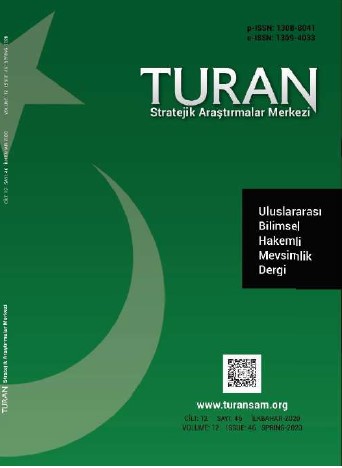ARAP AKDENİZ ENERJİ KORİDORU ve SOMALİ
ARAB MEDITERRANEAN ENERGY CORRIDOR AND SOMALI
Author(s): Abdullah ManzSubject(s): Energy and Environmental Studies, Environmental and Energy policy, Geopolitics, Peace and Conflict Studies
Published by: Sage Yayınları
Keywords: Somalia; the Middle East; Somaliland; oil; terrorism;
Summary/Abstract: Looking back at the map of the Middle East from a distance, it is clear that the most fundamental element of the ongoing conflict and chaos in Afghanistan, Syria, Iran, Libya and Yemen is Energy Domination. Somalia is in the Horn of Africa, one of the most strategic points of this Energy Domination war. The Middle East Energy Corridor passing through the Persian Gulf - Red Sea - Suez became insecure during the Great Middle East Project and the Arab Spring processes. This is not a coincidence, and some of the countries struggling for World Energy Domination are struggling to secure these roads, while others seek to gain political and economic interests from the instability there. Conflicts and tensions in countries such as the Persian Gulf, Yemen, Somalia and Egypt have increased Russia's energy market and revenues, while the US and Arab alliance have been making plans to transport regional oil to the Mediterranean via terrestrial pipelines. In this process, Israel, which is at the exit of the Mediterranean Sea, has found a suitable ground for both taking part in the route and achieving some political goals. Somalia which is sliding into a federal structure, becoming the target of al-Shabab, al-Qaeda, and finally Daesh terrorist organizations in the South. While Somaliland and Pundland are improving with the investment and support of the ARAMCO Coalition in the north, The West Coalition and the US is helping to this coalition under the pretext of combating terrorism.
Journal: TURAN-SAM
- Issue Year: 12/2020
- Issue No: 46
- Page Range: 241-249
- Page Count: 9
- Language: Turkish

